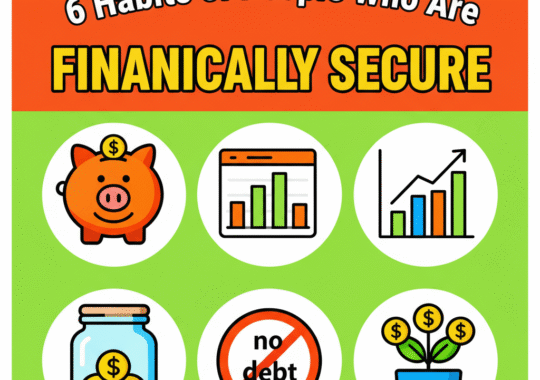If you’ve ever wondered why your marketing efforts aren’t bringing in the results you expected, you’re not alone. Most businesses focus heavily on creating content, but rarely check whether that content is actually doing its job. Just because something looks polished or sounds clever doesn’t mean it’s helping your brand grow.
Auditing your content might sound like a big task, but it doesn’t have to be. This guide will walk you through simple ways to figure out which assets are pulling their weight—and which ones might need a little help.
Start with Your Core Assets
Before diving into numbers or design tweaks, you need a clear list of everything you’ve already created. This includes your website pages, landing pages, blog posts, videos, emails, lead magnets, and anything else you use to communicate with your audience.
The goal here isn’t just to have content—it’s to have content that works. That means every asset should serve a purpose. Is it bringing in leads? Boosting engagement? Helping someone make a purchase? If you can’t confidently answer yes to at least one of those questions, it might be time to take a closer look.
Start by reviewing your homepage. Is it clear and easy to navigate? Does it direct visitors to your key offers without confusion? If you’re using video, make sure it’s high-quality, current, and reflects your brand well. Grainy footage, awkward lighting, or outdated visuals can create the wrong impression within seconds. That’s why many brands choose to work with a professional video production company to make sure their message looks sharp, on-brand, and engaging right from the start.
Check for Consistency Across Channels
Next, take a look at your messaging and visuals across platforms. Your website, social media, emails, and paid ads should all feel like they belong to the same brand. That includes using the same tone, colors, fonts, and logo variations.
If someone reads a friendly, casual blog post but clicks through to a sales page written in stiff corporate language, they might lose trust. A consistent tone keeps your brand feeling familiar and dependable. Same goes for visuals. Using five different styles of images across your platforms can confuse potential customers. Stick with a small library of branded graphics and photo styles that reflect who you are.
It helps to create a simple brand checklist. Jot down your tone of voice, brand colors, font names, and preferred image styles. Then run through each platform and note where updates might be needed.
Look at Performance Data (But Keep It Simple)
You don’t need to be a data expert to figure out if your content is working. Basic tools like Google Analytics, email platform reports, and social media dashboards can give you a pretty clear picture.
Start with your website. Look at your top-performing pages—what’s working well? Then find the pages with high bounce rates or low time-on-page. Those are the ones that may need improvement. For blog posts, check for traffic and engagement. Are people actually reading and sharing your content?
If an email campaign had a low open or click rate, review the subject line and CTA. Try A/B testing next time to see what works better. The key is to keep things simple and focus on the trends, not just one-off results.
Audit for Relevance and Accuracy
Even great content gets old. Trends shift, businesses grow, and customer needs change. Go through your content and check if anything feels outdated or off-brand.
Look for broken links, old branding, or messages that no longer reflect what your business does. A blog post that made sense two years ago might not align with your goals now.
Make a list of updates you can batch together. For example, if several posts mention a discontinued service, plan to rewrite or remove those. You don’t need to fix everything today, but having a clear plan helps you move forward with purpose.
Test for Readability and Flow
If your content is hard to read, people won’t stick around. It’s as simple as that. Content should be scannable, especially on mobile.
Use short paragraphs. Add headers and bullet points. Avoid long, complex sentences. If you’re not sure something flows well, read it out loud. You’ll quickly notice anything that feels clunky or confusing.
Also, consider using a readability tool to see how your content scores. Aim for clear, simple writing that sounds human, not robotic or overly formal. Your audience will thank you for it.
Review Visuals and Media
Images, graphics, and videos should support your message, not distract from it. Blurry visuals, off-brand designs, or outdated styles can hurt your credibility and confuse your audience.
Take time to review every page and post. Are the visuals consistent with your brand? Do they still feel fresh and relevant? If you’re using video, make sure it’s high-resolution, properly edited, and aligned with your current tone and messaging.
Don’t Forget Your CTAs
A call-to-action tells your audience what to do next. Without one, even the best content can fall flat. Every page and post should have a clear next step.
Look for CTAs that are buried, vague, or missing altogether. You don’t have to be pushy—just make it easy for people to take action. Whether that’s booking a demo, downloading a guide, or signing up for a newsletter, your CTA should be simple and direct.
Also, test placement. Many people never make it to the bottom of a page, so consider placing your CTA higher up or repeating it in a few places. Small changes can make a big difference.
If you’ve made it this far, you’re already ahead of the game. Most businesses don’t pause to check if their content is doing its job—they just keep producing more. But a smart audit helps you make the most of what you’ve already created.
You don’t have to audit everything at once. Start with a few pages or one campaign. Look at what’s working, what’s outdated, and what can be improved. Over time, these small updates will lead to a stronger, more consistent marketing strategy.
So go ahead—pull up your homepage, click through your latest posts, and take a closer look. Your content might just need a quick refresh to start working harder for your brand.





